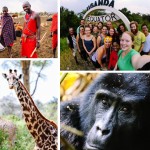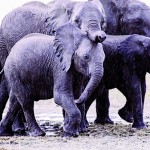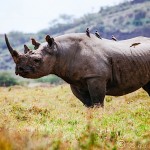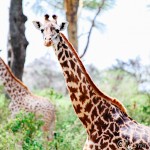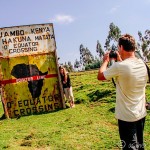The next few countries I visit — Kenya, Uganda, and Rwanda — will be on an 18-day overland tour with Acacia Africa, one of several companies who offer trips across the continent via overland truck. So before I get into the specifics of these destinations, I want to take a moment to breakdown exactly what it means to travel this way.
Q: What exactly is overland travel?
A: Overlanding refers to a style of travel where passengers get from place to place via a large truck. This vehicle holds all of the equipment (tents, cooking supplies, etc.) needed to accommodate up to 24 people. It stops at campgrounds each night where passengers put up tents, help cook food, and visit local attractions. This truck can handle the bumpy roads you might expect to encounter in rural Africa. It’s generally cheaper than flying, which makes overland travel a more affordable way to visit Africa… plus you get to really see the country and admire the landscape outside your window.
Here’s an example of the overland route I’ll do in East Africa — we start and end in Nairobi, driving through Lake Nakuru in Kenya and then continuing into southern Uganda to stop at all the highlights (Jinja, Kampala, Queen Elizabeth National Park, Lake Bunyoni, and the Impenetrable National Forrest for gorilla trekking). Then we come back into Kenya (Lake Naivasha) and drive south to visit Masai Mara National Park before returning to Nairobi.
We cover quite a distance in our overland truck and gain a unique perspective on this part of Africa.
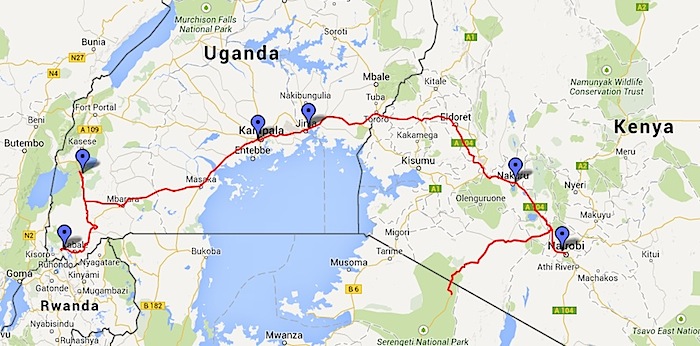
Q: Do you have a tour guide?
A: Yes! Each tour has both a guide and a driver. In the case of my particular trip, we have a married couple (Riaan and Juliana!) who have been leading overland tours for 18 years. They go the extra mile to make sure we have the best experience, even if it means driving longer on some days to get us an extra night at the best stops on our tour — for example, we spend four nights at a beautiful campsite overlooking the Nile River in Jinja, Uganda, which is one more night than originally planned. We have to drive about 14 hours to get there a day early (which Riaan and Juliana kindly offer to do) and then we luck out with an extra day there to relax.
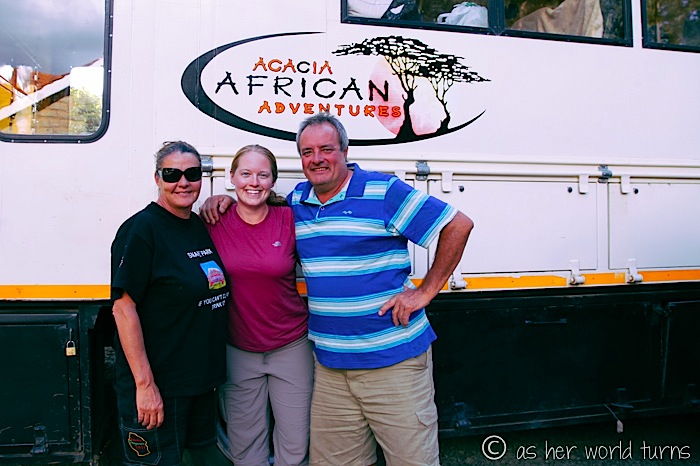
Q: What’s the vehicle like?
A: It’s enormous and, in my opinion, quite comfortable. There are lockers in the back where passengers store personal belongings (it’s deep enough to hold a large backpack, sleeping bag, and more). There are multiple coolers, one of which is usually designated for beverages.


This particular overland vehicle — called Tana; every truck has a name — has a small library in the back. This cozy touch makes me so happy. Riaan and Juliana stock the library at the start of the trip (with books left over from past tours) and then passengers can borrow whatever they like or leave behind other books they’ve already read. I fly through so many new books on this trip — when you’re on a vehicle for 10+ hours a day, it’s a lovely way to pass the time.

Here’s a few more shots from inside our overland truck:

It’s a good thing this vehicle is relatively comfortable, because we spend a LOT of time in here. We drive anywhere from 4 hours on a short day to 14 hours on a long day, often on bumpy, rural roads. Depending on your seat and the position of the sun, you might be really warm for a few hours. Each row of seats has a window so it’s nice to let in breeze, just beware that on dirt roads you might invite more dust than clean air into the truck. I don’t want to off-put anyone — this sort of overland travel is very doable if you know what you’re in for and have the right mindset. I enjoyed this downtime to read books, listen to podcasts, and even edit photos on my laptop when it wasn’t too bumpy. Other passengers with iPads watch TV shows or movies. But the most common activity is napping — you’d think that being relatively inactive all day would keep our energy up, but we spend the majority of our time dozing with our heads against the window (bring an inflatable pillow or sweatshirt to lean against).

Q: When you drive for 10+ hours a day, where do you go to the bathroom?
A: The overhand truck is huge, but there is no bathroom on board. This means that if we stop for a bathroom break, it’s often on the side of the road and we have to find a bush toilet. (Which means you crouch behind a bush and do your business.) Depending on the terrain, there sometimes aren’t bushes! In that case, girls go to one side of the truck and guys go to the other and do what you need to do. It is the opposite of glamorous. There’s always toilet paper in the back of the truck for these breaks, and generally everyone carries hand sanitizer with them.
True story: in an effort to limit my roadside bathroom breaks, I tend to drink way less water than I should on long travel days. This isn’t healthy and I don’t recommend it, but it’s the reality if you don’t want to pee on the side of the road every 2-3 hours.
It’s not exclusively bush toilets — when possible we stop at gas stations or rest stops. They’re usually dirty squat toilets but hey, beggars can’t be choosers. Here’s an example of a toilet shed at one of our rest stops:
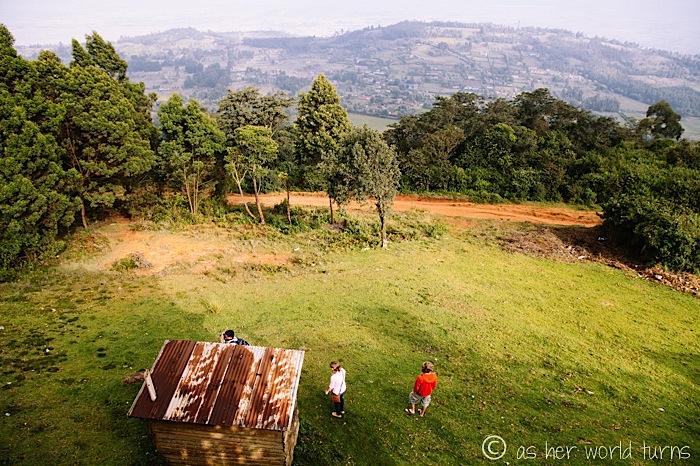
Q: And how about the tents?
A: The tents are easy to put up and each one holds two people, with extra space for backpacks. The overland company provides the tents and also sleeping mats — passengers only need to bring a sleeping bag and inflatable pillow. I’d recommend also bringing a sleeping bag liner, which adds warmth to your bag on cold nights and is a nice alternative to your sleeping bag on hot nights.

Each campground has blocks of showers, toilets, and sinks, usually within an easy walk of our tents. There is also usually a bar or restaurant on site, and a lot of them (but not all) have wifi.
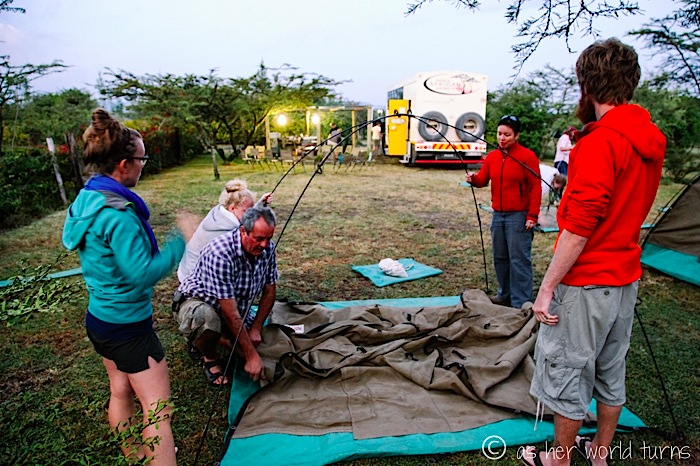
I thought I had signed up to go camping for all 18 nights of this trip… so imagine my surprise on the first night when our guides announce that we have the option of upgrading to a dorm room for about $10 USD. GAME CHANGER! It turns out — and I don’t know why this seems to be a secret until you arrive — that nearly every campground we stay at in Africa has the option to upgrade to a bed. Sometimes it’s as cheap as $3 per person, but usually costs more like $10-$15. It’s a nice perk, and not a bad alternative if you want a respite from camping.
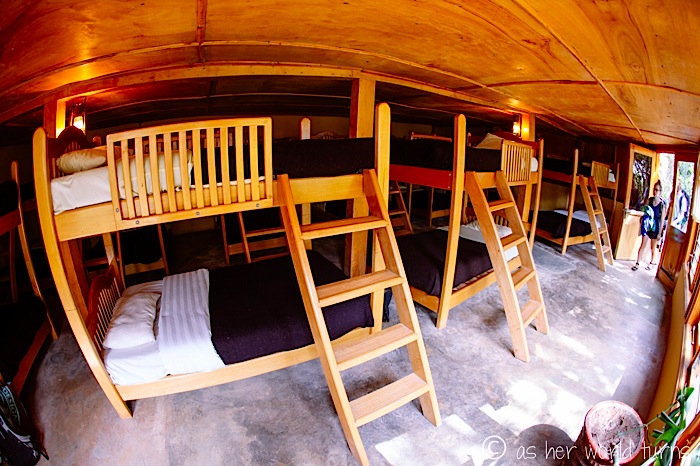
Q: Is the food any good?
A: In a word, YES. While this varies from tour-to-tour, each of the overland guides I encounter in Africa are good cooks. They purchase food either in grocery stores or pick up fresh fruit and veggies from vendors on the side of the road. Here’s an example of Juliana’s daily haul:

Breakfast is usually a simple affair, like toast with jam, hard-boiled eggs, granola, yogurt, and oatmeal. Occasionally there will be a bigger breakfast with bacon or sausage and maybe pancakes, if we are at the same location for a few nights and our guides have the time and energy to invest in a big morning meal. Sometimes we depart at 4am in which case we only have coffee and tea, but then during a morning rest stop we’ll pull out items like bread, jam, and yogurt.
On long driving days, we usually make lunch during our breakfast — putting together deli sandwiches with lettuce and tomato in the dark at 4am. Truthfully, this sucks. The sandwiches are soggy later in the day and aren’t really appetizing to begin with. That said, I understand the importance of getting to our next destination before dark. We need to make good time and streamlining meals helps.
When we have time to spare, our lunches on the road are great. We chop up veggies for fresh sandwiches and sometimes boil hot dogs (there are always vegetarian options). It’s not fancy but it’s totally palatable.

We stop at grocery stores almost daily so it’s easy to supplement this food with your own snacks and beverages and chocolate.
At the end of our Uganda travels, we have an extra day at our campsite in Nairobi… and Juliana whips up this table of snacks:

Dinner is the main meal of our day and it’s generally filling and delicious.
Part of the deal with overland travel is that passengers are expected to help with daily chores. There’s a list that splits the passengers into smaller groups to rotate between chores: sweeping the truck, preparing meals, cleaning dishes, and packing up the truck. Each day you have a new chore and when everyone does their part the whole trip runs smoothly. This is especially important with meals.
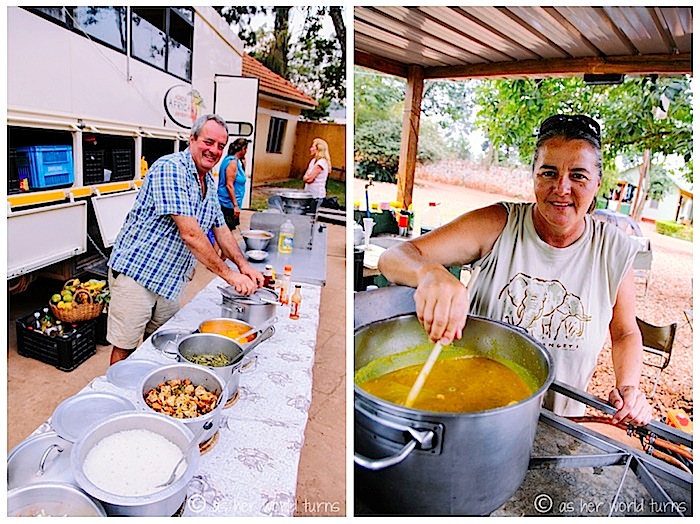
Our guides Riaan and Juliana do the heavy lifting when it comes to meals, but passengers pitch in to help chop veggies or assist in other ways. Here’s an example of our dinners, which often includes a meat dish, a vegetarian dish, and several veggie and starch side dishes.
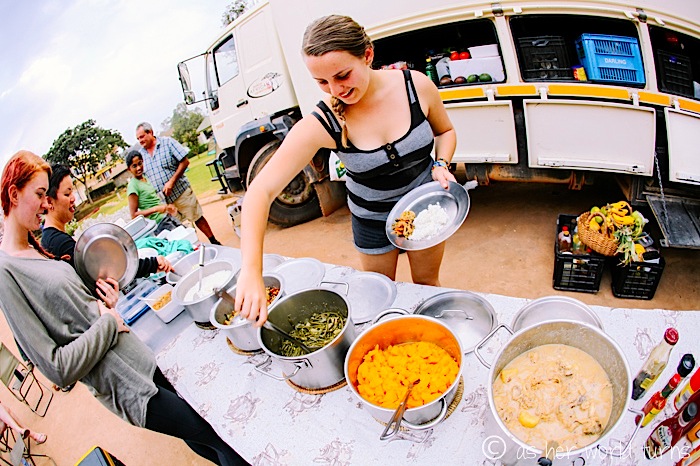
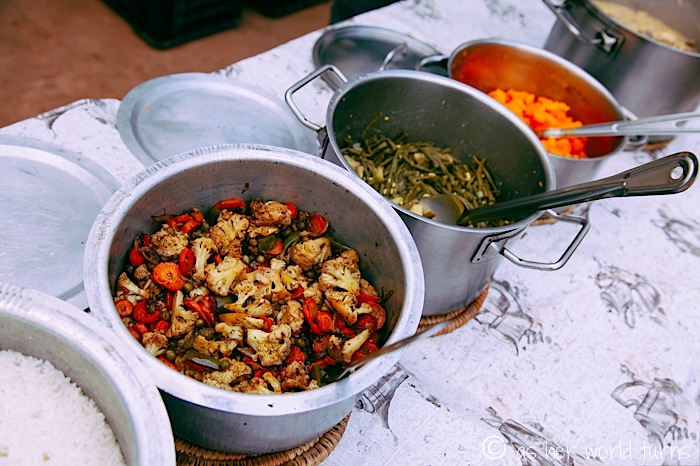
A few more images from mealtime:
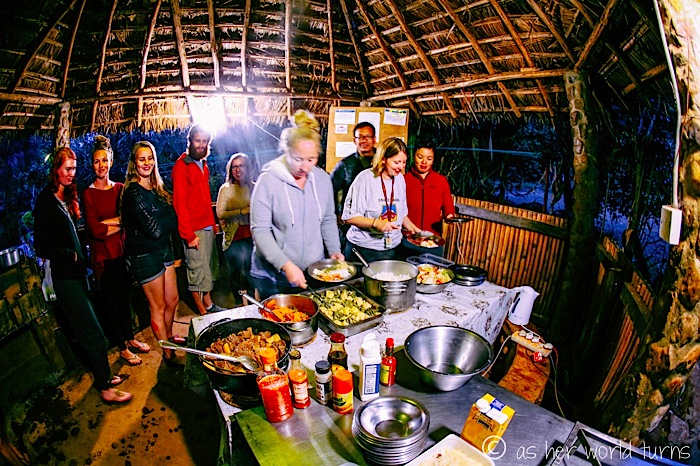

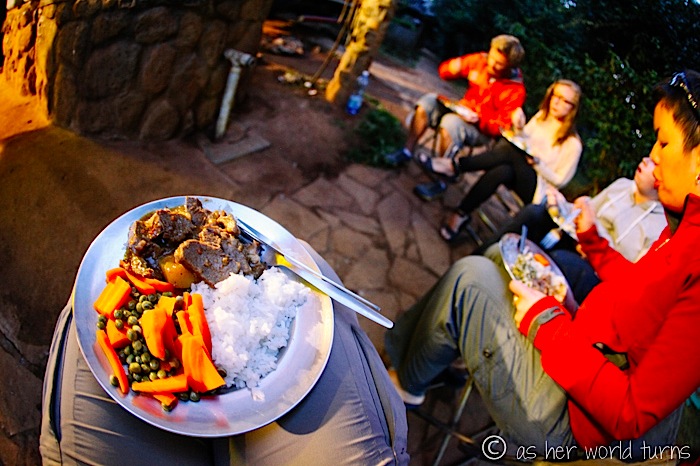
Q: What are the people like?
A: The average age of travelers on an Acacia Africa overland trip is 18-39 years old. I found it to be a fun group of adventurous, happy people. On this Kenya/Uganda trip we have one couple and the rest are all single travelers. I do a Namibia trip with Acacia Africa a few months later and it’s more of an even split between couples and single people. Everyone is pleasant and I make a few friends for life on these tours.

The only tricky thing with bringing a group of people together on an overland tour is that the composition of the truck changes every few days. Passengers have signed up for different itineraries so at each main city some people get off and new people get on. That lack of continuity can make it a challenge for passengers to gel as one big group. Plus it’s hard for the guides to start over every time someone new gets on the bus — explaining all of the details of overland travel and camping in one brief orientation chat. They do what they can, but then it’s up to the veteran passengers to work together with the newbie passengers to show them where everything is, how to set up for breakfast in the morning, and how to pack away the tables or chairs properly.
I mention this because about half the truck turns over on our first day in Nairobi, and we are essentially two different groups on the same bus — half new passengers who don’t know where anything is, and half old passengers who step up and do whatever needs to be done. The first three days are frustrating as the new people stand around helplessly wanting to assist with packing or food prep, but feeling in the way every time we ask to help. We even sit in different parts of the bus, as the veteran passengers congregate together in the back and leave the empty seats up front open for new people, which doesn’t help the divide.
But our guides do an introduction night every time new people join the tour, which happens on day three of our trip (they try to pick a night when we don’t have to wake up at 4am the following day). We take turns telling the group a little about ourselves and then do a shot — a ladle full of 96% vodka, which burns going all the way down. It’s a fun way to bring the group together and we feel more bonded after that.
Here’s a shot of our group the equator in Uganda:
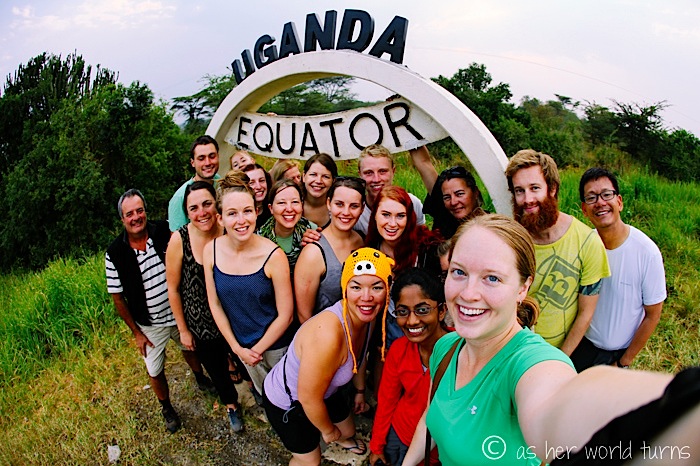
Is an overland tour right for you? I hope this post helps you decide. For more info, fellow travel bloggers GQ Trippin have put together this post on tips for overlanding in Africa. Let me know if you have any questions and I’d be happy to answer them!
Thanks to Acacia Africa for discounting my tour in exchange for photography and blogging. Opinions are my own.

